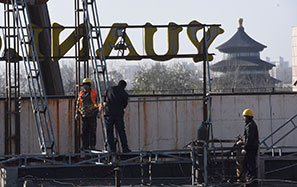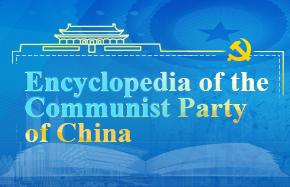India's growth crossroads
As the slowdown in the world's major industrial economies drags on, growth in developing Asia is being affected. A serious burden will likely be placed on the region's major economies, particularly its two giants, India and China. Both countries' external sectors have clearly been hit hard, while domestic consumption is stagnating. Fixed-asset investment in India rose by only 2.3 percent in the first half of 2012, compared to 9 percent a year earlier.
Unlike China, which has shown clear signs of stabilization since mid-2012, there is no clear evidence of recovery in India, as delay in implementing necessary reforms, among other factors, has weakened the economy's competitiveness. While recent government measures are expected to boost economic revival, an additional challenge is that growth must be made sustainable and more inclusive, which requires addressing four key issues.
The first is upgrading the service-sector. India already has a large service sector, which has been a major source of growth. Considering the country's young and growing population, the service sector needs to create more jobs for the millions who will join the workforce every year.
But India's service sector has been dominated by traditional, low-wage output in informal businesses, such as restaurants and personal services. To achieve inclusive growth, India must shift toward modern services, such as Internet connectivity technology, finance, law, accountancy, and other professional business services. The authorities must reduce burdensome regulations to allow the sector to be more competitive and dynamic. Recent government service sector reform has been most welcome.
Second, improvements in the investment climate are vital, especially if India is to realize its potential in manufacturing. India needs to expand dramatically the sources and volume of available infrastructure financing. This will not be possible without private-sector participation, which requires, in turn, a business environment that ensures adequate return on investment, transparency in procurement, and high-quality governance and regulation.
Third, while India possesses some of the world's best managers, scientists, and engineers, a large portion of its workforce is unskilled or semi-skilled, which may constrain the country's ability to deliver inclusive growth. The National Policy on Skill Development marks a welcome shift from the traditional, government-led model of skill development and vocational training to one that emphasizes private-sector-led initiatives.
Finally, there is the challenge of urbanization. Migration to urban centers is causing new cities to emerge and existing ones to expand. India must seize the opportunity to adopt green urban planning early on: mass-transport systems should link satellite cities to ports and megacities, and new cities should be eco-friendly and energy-conserving. The Indian government's recent promotion of dynamic economic corridors between major cities is a step in the right direction.
The Asian Development Bank is working on innovative mechanisms to finance infrastructure, such as the recent partial credit guarantee facility set up by India Infrastructure Finance Company Limited in collaboration with the ADB. By boosting the credit ratings of infrastructure projects via credit enhancements, this facility will allow pension funds and insurers to invest in infrastructure projects.
A large share of ADB assistance is focused on India's lagging states, making its work strongly inclusive. Moreover, the ADB's support includes skills development, particularly to foster skills required by the infrastructure sectors, and strengthening skills design and delivery systems.
The ADB is also exploring possibilities for focusing a subset of its operations around a few high-priority economic corridors, which leads naturally to the issue of regional cooperation and integration. With India playing a major role, the benefits of cooperation are immense, both within South Asia and across the continent more broadly. Greater regional cooperation can help South Asia to achieve shared prosperity that is both inclusive and sustainable.
Indeed, only 5.4 percent of South Asia's current trade flows are intra-regional, compared to 51 percent in East Asia. Major hurdles include poor transport connectivity and stifling non-tariff barriers, which impede growth and undermine welfare in Nepal, Bhutan, Bangladesh, and north-eastern India.
With strong support from India, the South Asia Subregional Economic Cooperation Program, known as SASEC, has achieved much success in prioritizing trade facilitation; developing regional road and rail projects in Nepal, Bhutan, Bangladesh, and India; and agreeing on a time-bound investment program, including investment in the Siliguri corridor connecting India's north-eastern states with the rest of the country. Improved connectivity and trade will not only boost growth, but also promises an economic lifeline for millions of poor people.
India is expected to continue to benefit from its so-called demographic dividend and to lead global growth in the coming decades. Everybody sees the country's enormous potential. Timely reforms on key issues will open the door to a bright future for its people.
Project Syndicate
The author is president of the Manila-based Asian Development Bank.
























